[Trade Journal]
Publication: American Electrician
New York, NY, United States
vol. 9, no. 2, p. 69-70, col. 3,1-3
NEW
Apparatus
AND
Appliances.
·
·
CEILING ROSETTE AND COVERED CUT-OUTS.
Among recent interior wiring fittings are several illustrated herewith, consisting of a ceiling rosette, a main line and a branch cut-out. The former, shown in Figs. 1, 2 and 3, has the cap secured to the case by means of the brass kidneys of the cap interlocking with the line contacts of the base. These are held in place and tightened by the round-head screws shown in the cap, to remove which it is only necessary to turn the screw, A A, a half turn and revolve the cover to the left. The fuse chambers are entirely separated from each other by the china rib, A, shown in Fig. 2. Either metal-tipped fuse links or ordinary fuse wires can be used.
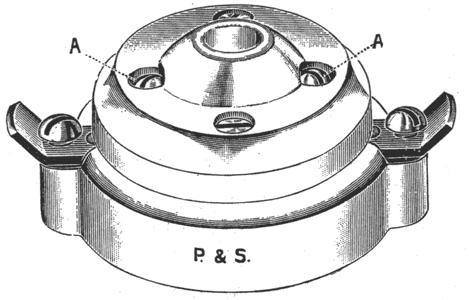 |
| Fig. 1. |
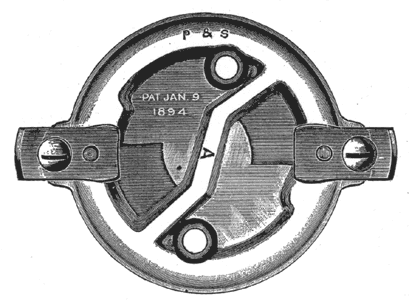 |
| Fig. 2. |
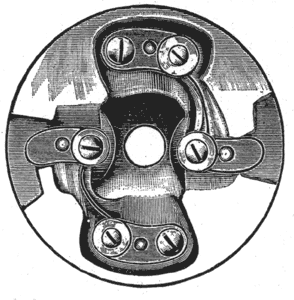 |
| Fig. 3. |
Fig. 5 shows a main line cut-out, and Figs. 4 and 7 a branch cut-out, the cover of each being illustrated in Fig. 6. As will be seen in Fig. 6, there are separate channels for the fuses, and when the cover is on the base, these channels, as well as the fuse contacts, are separated by the projection on the base, which fits into the recess, C, of the cover. The fuse channels are just large enough to take the largest fuse for which the block is designed. To take off the cover it is simply necessary to loosen the round-head screws shown, a half turn and push the cover endwise.
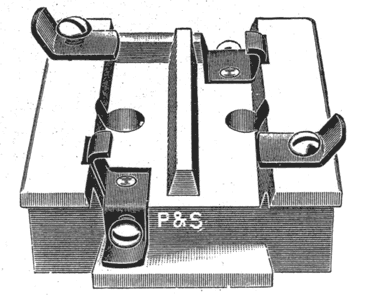 |
| Fig. 4. |
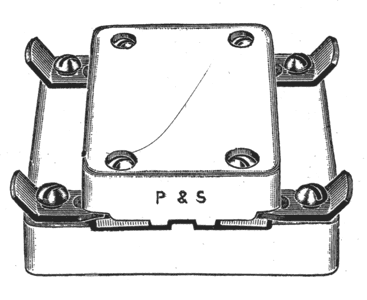 |
| Fig. 5. |
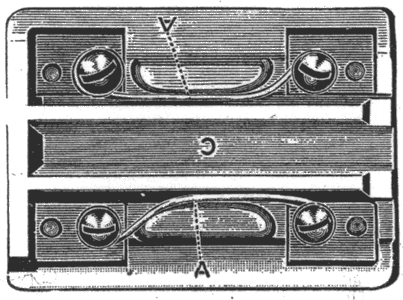 |
| Fig. 6. |
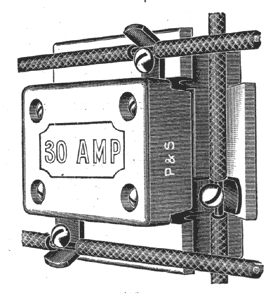 |
| Fig. 7. |
·
·
